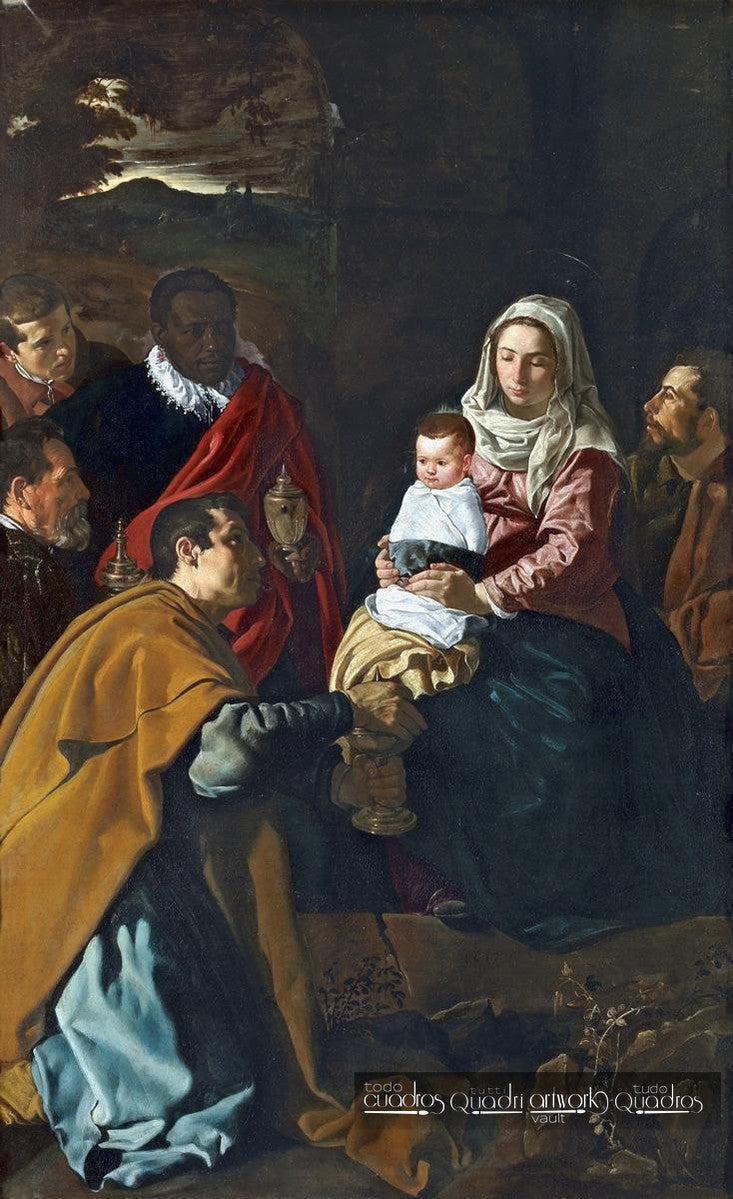
Adoration of the Magi, Velázquez
- Oil on linen canvas
- 100% hand-painted
- Reproduction painting
- Available to purchase online
- See quality
- Delivery to the UK
- Money-back guarantee
- Customer reviews
| Author: | Diego Velázquez |
|---|---|
| Original Title: | Adoration of the Magi |
| Type: | Painting |
| Style: | Baroque |
| Medium | Oil |
| Support: | Canvas |
| Year: | 1619 |
| Subject: | Biblical passage |
| Located: | Prado National Museum, Madrid. |
From a technical standpoint, Velázquez shows an early mastery of chiaroscuro and light-plane modeling, techniques he would later perfect in his mature period. The balance between earthy tones and golden highlights unifies the composition, while the folds of the fabrics reveal a meticulous study from life. The brushwork is dense yet controlled, and the pyramidal arrangement reinforces the visual stability of the group. This work anticipates the realistic sensitivity that would define his later production.
The painting’s realism is evident in the gestures and textures, in the precision of the faces, and in the restraint of the colors. The Magi, of different ages and origins, approach reverently while Mary, youthful and serene, holds the child with tenderness. Joseph contemplates the scene in silence, his expression mixing wonder and reflection. The Infant Jesus is wrapped in white cloths and marked by a cross-shaped halo, a detail that foreshadows his destiny.
In The Adoration of the Magi, Velázquez naturally portrays the moment when the three kings from the East offer their gifts to the Infant Jesus. The scene unfolds in a simple, unadorned setting, where the light emphasizes the encounter between the figures and creates an atmosphere of calm and contemplation. The arrangement of the figures forms a visual circle that draws the viewer’s attention toward the child, the true center of the composition.
Choose options



